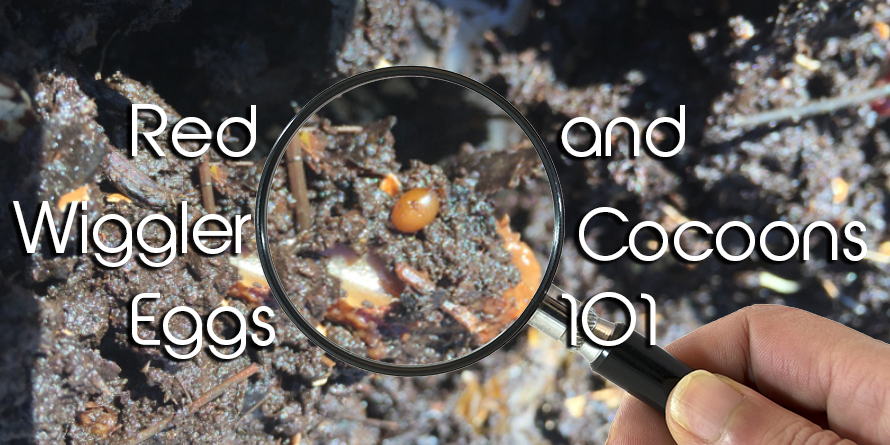Achieve a Lush Lawn Using Lake Hickory Bait Lawn Care Resources
Achieve a Lush Lawn Using Lake Hickory Bait Lawn Care Resources
Blog Article
Red Wigglers: The Unsung Heroes of Organic Waste Recycling
Red wigglers, or Eisenia fetida, function as essential agents in the organic waste recycling process, changing thrown out products right into valuable vermicompost. Their effective failure of raw material not only boosts dirt quality however likewise adds to sustainable waste administration practices. As the world increasingly looks for options to battle waste buildup and improve agricultural productivity, comprehending the role of these worms becomes important. What devices enable them to thrive in compost environments, and just how can they be successfully utilized in both domestic and commercial settings? Discovering these questions exposes the wider effects of vermicomposting in our eco-friendly landscape.
What Are Red Wigglers?
The amazing strength of red wigglers, scientifically called Eisenia fetida, emphasizes their vital role in organic waste recycling. These small, reddish-brown earthworms are usually discovered in decomposing natural matter, such as compost heap and manure heaps. Lake Hickory Bait. Unlike other earthworm species, red wigglers prosper in nutrient-rich atmospheres and are extremely effective at damaging down organic products, making them vital for vermicomposting

(Lake Rhodhiss Bait)Along with their role in waste decrease, red wigglers add to dirt health and wellness by improving dirt framework and aeration via their delving activities (Lake Hickory Bait). Their visibility in composting systems not only improves disintegration rates yet additionally promotes a lasting approach to waste monitoring, showing their importance in eco-friendly conservation efforts
Benefits of Composting With Worms
Composting with worms, specifically red wigglers, supplies countless advantages that improve both waste management and dirt health and wellness. These worms efficiently damage down organic waste, transforming it right into nutrient-rich vermicompost that improves dirt. This process speeds up decomposition, allowing for a quicker recycling of kitchen scraps and various other organic materials compared to standard composting methods.
Additionally, the vermicompost created by red wigglers is brimming with helpful microorganisms, which aid enhance soil structure, aeration, and wetness retention. This improves the overall wellness of plants, advertising energetic growth and boosted yields in gardens and farming settings. Additionally, making use of worms in composting reduces the manufacturing of greenhouse gases, such as methane, adding to a much more sustainable waste monitoring system.

How to Beginning Vermicomposting
Developing a vermicomposting system is a straightforward process that can produce significant advantages for both waste monitoring and dirt enrichment. To start, pick a suitable container, such as a plastic container or wood box, with ample air flow openings to ensure appropriate air movement. The dimensions should preferably be around 2 feet by 3 feet, permitting their explanation adequate room for the worms to flourish.
Next, prepare bedding material, which can consist of shredded newspaper, cardboard, or coconut coir. This bed linen must be dampened to create a suitable habitat for the worms. Once the bed linens remains in place, present red wigglers (Eisenia fetida) into the bin, usually around one extra pound of worms for each square foot of area.
Following the positioning of worms, add natural waste, such as fruit and veggie scraps, coffee premises, and smashed eggshells. With these steps, you will properly launch a vermicomposting system that contributes to lasting waste management and improves your soil.
Maintaining a Healthy And Balanced Worm Bin
(Red Wiggler Express)Maintaining a worm bin flourishing requires regular focus and care to make certain the health and wellness of the red wigglers and the effectiveness of the composting procedure. Appropriate upkeep begins with monitoring the wetness degrees; the bin must be damp however not soaked. A great regulation of thumb is to preserve an uniformity similar to a wrung-out sponge.
Aeration is important as well. Carefully blending the bed linens and food scraps every couple of weeks stops compaction and ensures that all worms have access to oxygen. Furthermore, it is important to feed the worms properly. A balanced diet plan of vegetables and fruit scraps, coffee premises, and smashed eggshells should be offered in small amounts to stay clear of overfeeding, which can lead to odors and bugs.
Temperature guideline is an additional essential facet. Red wigglers flourish in a variety of 55 to 77 levels Fahrenheit. If the container ends up being too hot or cool, the worms may end up being stressed out - Lake Hickory Bait. Regularly inspect for indicators of health, such as worm population growth and the visibility of healthy and balanced spreadings. By faithfully taking care of these variables, one can keep a durable and efficient worm container.
Impact on Lasting Living
The effective maintenance of a worm container not only benefits the health and wellness of red wigglers but also adds dramatically to sustainable living techniques. By reusing organic waste, such as cooking area scraps and lawn debris, red wigglers aid divert substantial quantities of material from land fills. This reduction in waste not only lowers greenhouse gas discharges however likewise reduces the environmental worry related to waste management.
In addition, the castings created by red wigglers function as a nutrient-rich natural fertilizer, enhancing soil wellness and advertising plant growth. This natural choice to chemical plant foods sustains sustainable farming and gardening techniques, lowering dependence on synthetic inputs that can damage environments. Additionally, worm composting cultivates recognition of waste administration, encouraging individuals and areas to adopt even more lasting behaviors.

Final Thought
In recap, red wigglers function as crucial factors to natural waste reusing via their reliable decay of natural products. Their capacity to generate nutrient-rich vermicompost boosts dirt health and sustains sustainable agricultural methods. By integrating vermicomposting into waste management strategies, people and neighborhoods can substantially minimize waste while promoting environmental sustainability. The role of Eisenia fetida in fostering healthy ecosystems underscores the importance of these organisms in accomplishing sustainable living and enhancing soil fertility.
Report this page